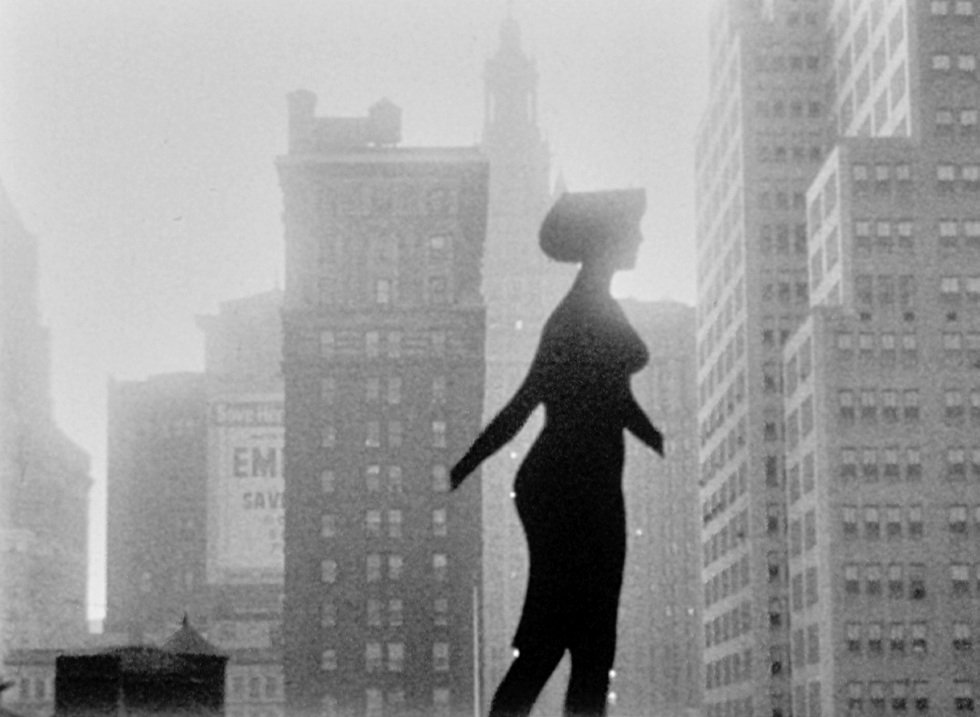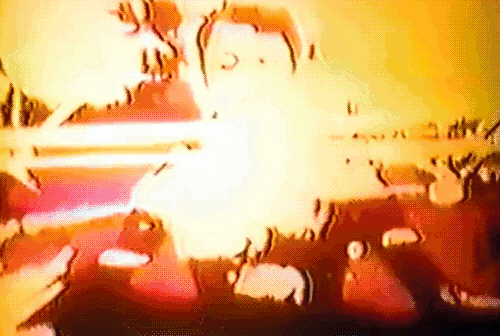
January of this year saw the deaths of two major figures of the Canadian Avant Garde Experimental film scene of the 1960's and 70's in Michael Snow (1928-2023) and David Brimmer (1942-2023). Both were products of the Avant Garde 60's influenced by the 1920's Dadaist German filmmakers Hans Richter, Viking Eggeling and Walter Rutmann, the French Marcel Duchamp, Man Ray, the Spanish Louis Bunuel and American James Sibley Watson as well as the later works of Americans Joseph Cornell, Harry Smith, Andy Warhol and the Fluxus Film Collective. They made short films, usually less than ten minutes, which sought to use film as a medium to recreate the esthetics of various art movements; Dada, Surrealism, Impressionism, Abstract Expressionism, Cubism, Constructivism, Pop Art and Op Art in film rather than to tell any sort of narrative. Most of these filmmakers had little or no film experience and were in effect amateurs and it sometimes showed in their crude attempts to figure out the new medium. Some wandered over from other arts entirely. Andy Warhol was of course a visual artist as were Marcel Duchamp and Joseph Cornell. Harry Smith was a folklorist who had assembled the "Anthology Of American Folk Music" box set that would help kick of the Folk Revival of the late fifties and sixties while John Cale was a classically trained Avant Garde musician and soon-to-be bassist for the Velvet Underground and Yoko Ono was, well, Yoko Ono.
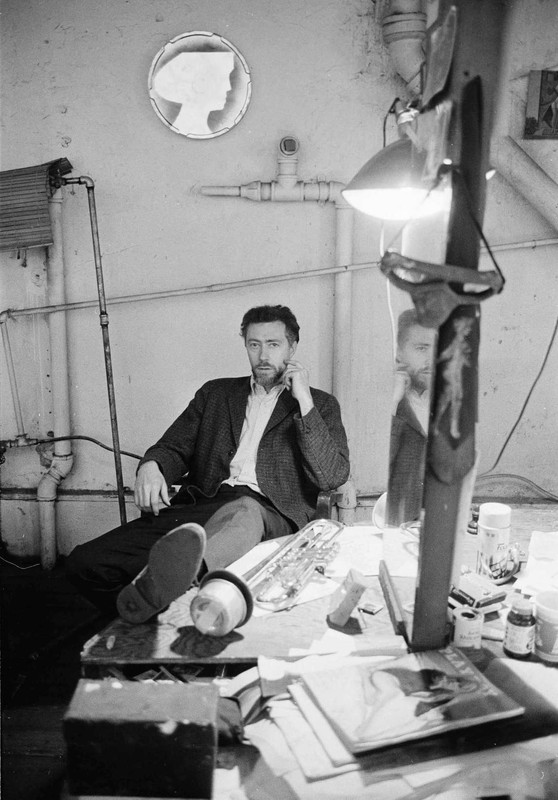
MICHAEL SNOW
Toronto born Michael Snow was in this tradition being both a Free Jazz pianist who had recorded both as a soloist and member of the Canadian Creative Music Collective (CCMC) as well as a trained artist and sculptor whose work had been exhibited at the 1967 Montreal World Expo, the same year he would make what is widely considered the most annoying film ever made, at least among those who have actually seen it.
Snow started out quietly and conventional enough with "A To Z" (1956) a black and white animated short which appears to be influenced by early Cubist paintings albeit in monochromatic form in which a table is set with cups and plates which come to life and floats around before appearing to make sweet sweet love. This playful short is considerably more gentle than the jarring racket to follow and Snow later distanced himself from it. He would in fact not make another film for a decade. The original was silent so I added an appropriate soundtrack.
"A TO Z" (1956);
In the sixties Snow busied himself with painting and sculpture including a large painting at the 1967 World Expo in Montreal for Canada's Centenial. Besides art he also involved himself in Jazz as a pianist playing in the most Avante Garde of genres, Free Jazz making recordings with the CCMC ensemble. It would be Jazz that would lure him back to film in 1964 when he went down to New York and made "New York Eye & Ear Control'', a ostensible documentary done in a black and white cinema verite style over which was played a soundtrack by a Free Jazz ensemble led by Alert Ayler and Don Cherry, men at the most cutting edge of in 1960's Free Jazz, itself considered at the cutting edge of music. The film is not really about the musicians, who we rarely actually see. There is no information about the musicians and the only recurring figure we see is of a store manikin cut-out of a woman as she appears to lead us on a leisurely stroll from a rocky shoreline through the countryside to the city. The choice of so much desolate rural imagery of deserted shores and woods is a little puzzling as Jazz, especially Free Jazz is thoroughly associated with the modern asphalt jungle and we don't even get there for a full thirteen minutes and then we go back to a deserted rock shore with out cut-out manikin guide until suddenly she is burned up and consumed in flame and run over by passing cars as the horns blare. Eventually one of the surviving cut-outs is removed to reveal a real woman who is equally motionless.
"NEW YORK EYE & EAR CONTROL" (1964);
Oddly for a film about Jazz we actually get no sound at all until over three minutes in when we get a short sax wail then another several minutes of silence until after the nine minute mark when we get a more energetic frenzy of ensemble Jazz for the rest of the film. The playing, while cacophonous, is actually less frenzied than much of Albert Ayler's work and we don't see them actually playing. In fact the only footage we see is a brief scene of one of them hailing a ride to the gig and later a series of closeups which look like the infamous Andy Warhol "Screen Tests" which would be made in starting in 1964 leaving an open question as to whether Warhol had seen this film or if Snow had seen Warhol's first "Screen Tests". The record shows Warhol started filming them in January of 1964 but did not show them until the next year when he had a series of them although he had been making some similar shorts since 1963 which Snow may have been aware of. The film ends with a montage of the same cutout image repeated on a single sheet which also bears a strong resemblance to Warhol's screen printing work which had started around 1962 and which Snow must have been aware of. In fact the cut-out woman was part of a series called "The Walking Woman" that Snow had been using in paintings since 1961 and would later turn up in a major painting he exhibited as part of Canada's Centennial Expo in 1967 which Warhol would also be a part of. Another New York contemporary would be the Fluxus Art Collective which had also started making similar short art films in 1964. What does all this mean and what does it have to do with Jazz? Damned if I know but it's a more ambitious work than his first animated short. This also provides possibly the only filmed images of the enigmatic Albert Ayler (even though he's not shown actually playing) before his mysterious death of a likely suicide in 1970.
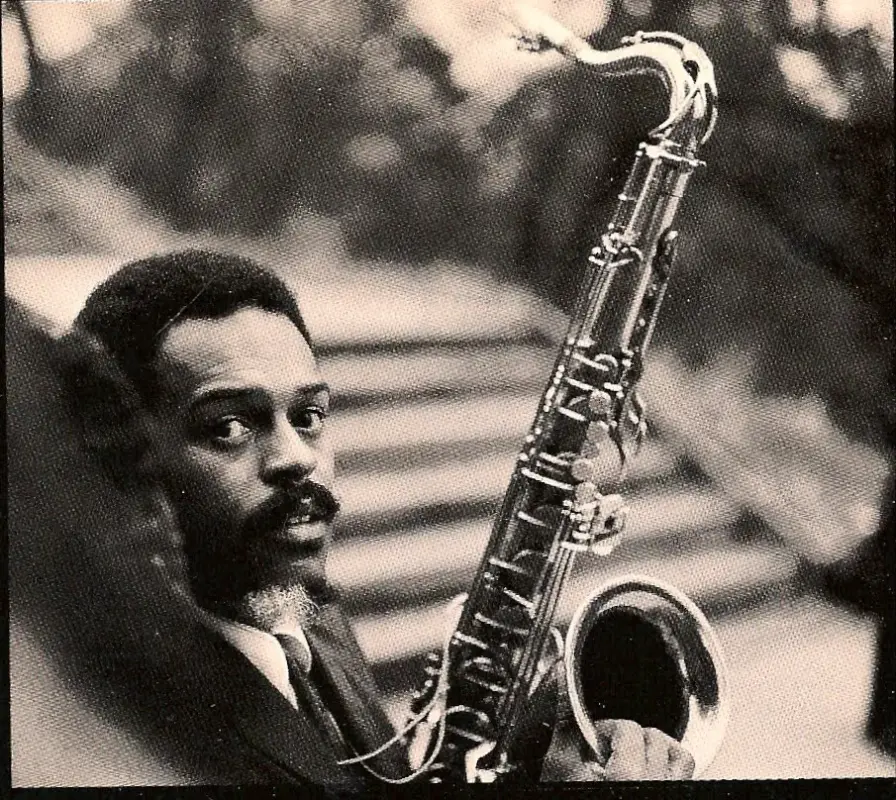
ALBERT AYLER
Snow's first two films showed obvious influences from other similar filmmakers but in 1967 he made what is considered his most important/notorious work in the full length opus "Wavelength" in which he developed his own art film genre as Structuralism. This forty-three minute film is easier to describe as a narrative than as an experience. The film itself is literally a static shot of what appears to be a ugly and largely empty studio or office space. We open with a woman letting in some workmen who deliver some sort of large object then they leave and we hear traffic sounds from outside. Two other women walk in and sit around listening to the Beatles "Strawberry Fields Forever" then they leave too and we are left with an empty room with flickering lights and traffic sounds and occasional off screen hammering and breaking glass for another fifteen minutes. The already grainy image becomes even more grainy and poorly lit and gradually we begin to hear a persistent electronic hum which will get louder and rise in tone becoming more shrill. At around the seventeen minute mark a man walks into the room and collapses suddenly (and very awkwardly and unconvincingly) on the floor. The electronic hum becomes even louder more shrill downing out the ambient sounds as the camera slowly moves closer to the wall zooming in (if that is the right word for such a laboriously slow tracking shot) on a metal office desk and chair in front of a window leaving the man's prone body out of shot.This continues for another twelve minutes when the first woman returns and glancing at the dead body on the floor then picks up the phone and reports the body (in the most petulant and bored manner possible) before sauntering back out again. For another ten minutes the electronic hum increases in pitch and volume as the camera slowly moves past the desk to focus on a small picture on the wall under which the shrill drone can be heard sirens coming closer. Eventually the picture becomes closer and we see waves on a shoreline.
"WAVELENGTH" (1967);
The look of the film is crude in the extreme. Besides the static camera, poor lighting and little editing the picture quality is grainy and sometimes completely washed out. To be fair the print shown here and most commonly available is of poor quality although there is a better copy not online. Then there is the persistent electronic hum which provides the film's soundtrack (for lack of a better word) which is made by an electronic tone sine wave slowly moving up the musical scale becoming higher in pitch as well as progressively louder to the point where it would become beyond merely annoying and overpowering and even painful for some viewers. This is assuming this film were being shown in an enclosed space with a loudspeaker system as it would have been at the time as opposed to being watched today on a computer with the viewer controlling the volume.Unlike most Structuralist films this one actually has the merest hint of a plot with an apparent death and the final zoom in shot of the peaceful ocean shore contrasting with the utter indifference of the woman to the body in her studio and the migraine inducing noise. The film's plot (such as it is) and it's grainy look could actually suggest a scene being captured by a poor quality security camera although these were not common at the time. The film is also different from most previous Art Films in its length, being more than twice as long as most Dada films of earlier eras. The film's visual ugliness, aggravating sound and punishing length make it a chore to sit through and unlike many other Art Films I am not convinced it's worth the slog.
"Wavelength" would be considered an important film in some Avant Garde art circles as the definitive example of a genre of Art Film Snow called Structuralism. As a concept defined by Snow and others would attempt to strip art film of any need for a narrative or visual sense or even a modicum of technical skill to create a purely visual representation of the mundane. The tropes of Structuralist film included stationary camera, few if any edits, low resolution film, muffled sound and a focus on drab objects rather than people. The object of which was to challenge the very idea of what art and film could even be along with the idea that anybody needed any particular skill or training or decent equipment with a vague idea being enough. Most such films have no apparent subtext although this one may be seen as having one due it's almost having a plot of sorts. Along with the desire to create art from nothing but essentially found images was a desire to challenge traditional notions that art should be in some way attractive or interesting and could even be actively aggravating. As concepts go I have no objections to Anti-Art nor that art being willfully annoying. By the late sixties these were hardly new or unique ideas anyway. The entire Dadaist ethos had been based around the very idea that art could be anything, that anybody could do it and that it was healthy to offend people, especially those in the art establishment. Those ideas would be seen in the Dadaist films of Hans Richter, Walter Ruttman, Viking Eggeling, Marcel Duchamp, Bunuel and Man Ray and later films of Maya Deren, Bas Jan Ader, Andy Warhol and the Fluxus Collective. These themes would also be seen elsewhere in the arts in the plays of Alfred Jarry and Antonin Artuad, the music of George Antheil and later John Cage (who also worked with Fluxus), Free Jazz, various types of Abstract Art, the poetry of the Beats, Performance Art and ultimately Punk Rock and early Industrial Music. All of which I am in favour of. However the previous Dada themed films usually had some striking and sometimes beautiful imagery while this is just ugly and the various musical genres had energy, emotional honesty and deep meaning while this film is sapped of all feeling other than boredom and annoyance.
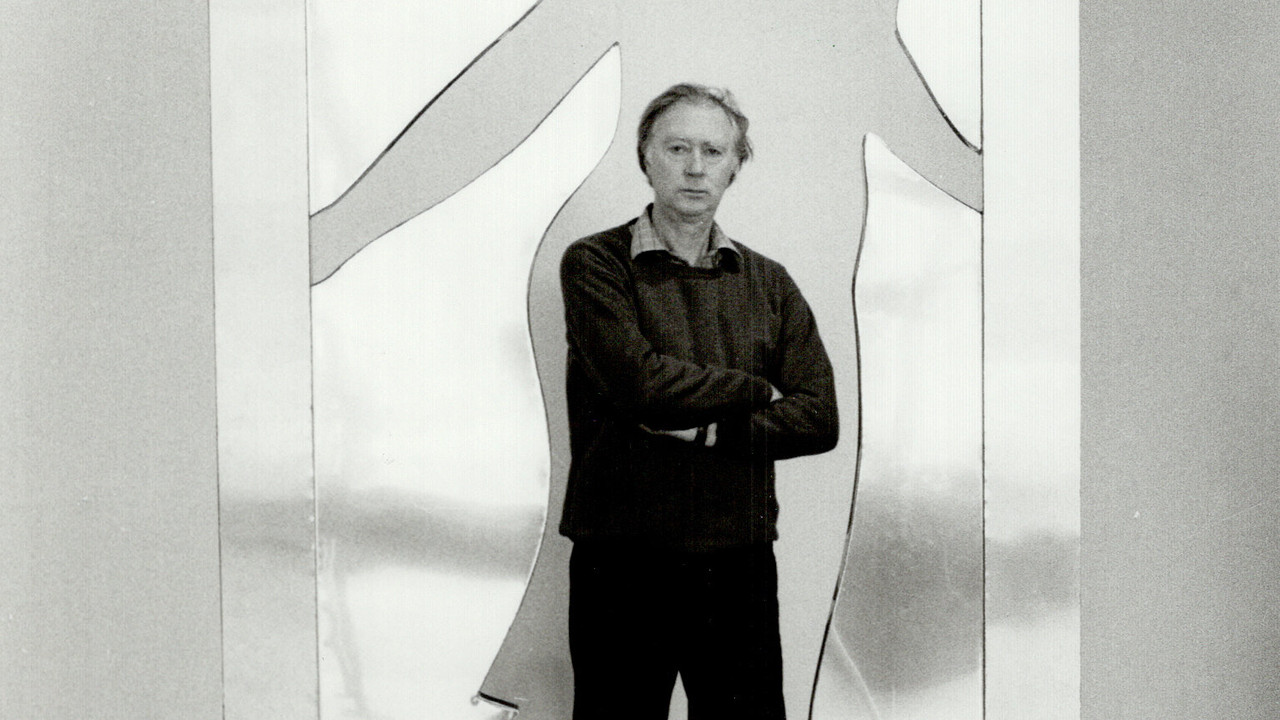
MICHAEL SNOW & THE WALKING WOMAN
Perhaps not surprisingly in spite of, or because of the film's flaws "Wavelength" has become a cult film (albeit an obscure one) with many seeming to think the film's self consciously irritating nature, oppressive length and pretentious theorizing must denote some sort of deep meaning and it seen as an landmark of Experimental Film winning a grand prize at a Belgian Film Festival and making many lists of essential and influential films including ranking 102 on the "Sight & Sound" list of the "Greatest Films Ever Made" in 2012. In 2003 Snow released a re-edited version entitled "Wavelength For Those Who Haven't The Time" which cut the length by more than half by editing it and layering different scenes on top of each other and making the ending shot of ocean waves clearer. The layering makes this version more hallucinatory rather than the coldly objective original which seems to go against the basics of Structuralism. It also has a better quality print all of which actually makes it a somewhat more visually interesting film as well as showing that Snow did at least have a sense of humour about it. The better quality print also enables us to notice that among the pictures on the wall are some of the cut-out women from "New York Eye & Ear". However none of this makes either an enjoyable viewing experience especially for anyone unfamiliar with this already willfully obscure genre.
"WAVELENGTH FOR THOSE WHO HAVEN'T THE TIME" (2003);
"STANDARD TIME" (1967);
While in "Wavelength" the camera barely moved there is no such issue here as we see a camera apparently in the center of a small cluttered apartment as it spins about the room, pans back and forth and up and down for eight minutes. For a soundtrack we have snippets of apparently random pieces of conversation between a man and woman which sometimes fade in and out as if the microphone was also spinning about the room. We also get snippets of a radio as someone surfs through along the dial. The apartment has cheap furniture with a bed, shelves and stereo being seen. We also get a woman lounging about not acknowledging the camera as well as her pet cat who also does not acknowledge the camera. The film ends abruptly. This short film was released the same year as "Wavelenght" but it's unclear which he actually shot first however with it's constantly panning camera it may have been an experiment that anticipates Snow next major Structuralist film.
Continuing the theory of Structuralism, Snow followed it up in 1969 with "Back And Forth" (originally known as "<---->"). This film is even more bare bones than "Wavelength" in having no trace of a plot at all. It does however have more camera work as the title implies. We open with a simple shot of an outside wall, then the camera which is mounted on a tripod tracks sideways abruptly and awkwardly to another wall to the right and then back again. And again. And again. Back and forth abruptly and mechanically several times with the sound of the tripod's clicking mechanism clearly audible. Then we go inside a classroom (the film was shot at a university in New Jersey) where it continues as before. This goes on for several minutes. After half an hour (once again Snow has given the film a grueling length of over forty minutes) the camera abruptly switches to rapid up and down motions which are even harder to make out. Eventually this motion slows down again to show a cop watching through a window. Occasionally someone will walk through the frame without acknowledging the camera. The "cast" (if that's the right word) appear to be random passersby going about their day; students in class, a janitor sweeping up, two students playing catch, two more kissing, two more get into a shoving match, etc but were actually various friends of Snow from the arts scene one of whom includes Beat Poet John Giorno. Occasionally somebody speaks softly, usually the words are unintelligible but one woman can be heard mentioning the film's title. The people will often disappear between camera pans suggesting either they were quickly hustled out of the way or removed in editing. Incidentally while part of the ethos of Structuralism was to film prosaic real life by removing all artifice this is somewhat undermined in both films by Snow using a cast to have clearly staged interactions for the camera and the use of some edits. The last five minutes takes some earlier footage and layers it over each other to create a hallucinatory effect, the same thechnique he would use in the 2003 "Wavelength" remake.
"BACK & FORTH" (1969);
As with "Wavelength" the picture quality is harsh and grainy and dark as ambient lighting is used. As with "Wavelength" the classroom is drab and featureless. The camera's back and forth motion changes speed first becoming slower before speeding up like a ping-pong game to the point where the movements become frenzied and disorienting, particularly if this film had been viewed on a large screen. In fact if the overall feeling left by "Wavelength" is annoyance the feeling left here is dizziness. This film is not recommended for those with motion sickness, vertigo or epilepsy. In fact as was also the case with "Wavelength" the intent again seems to be to provoke an uncomfortable physical reaction (annoyance and irritation with the first and dizziness in the second) for which both film's grainy ugliness, harsh sounds and punishing length finally make sense. However for this to work they pretty much have to be seen on a fairly large screen with a proper speaker system such as at an Arthouse Theatre, Art Gallery or Film School where they were shown at the time rather than as today on a computer screen where the viewer can fast forward or mute. The irony of structuralism is that while it aspired to hypnotic levels of intellectual engagement (through disengagement) the reaction is actually physical and can only reach it's full effect under specific showing conditions. The other irony is that while the bare-bones amateur nature of Structuralism could in theory be shot by anybody with a camera and a vague idea and thus could be completely democratic, to have their full effect the films would pretty much require access to an Art Gallery or Arthouse Theatre to properly show them which few people have access to.
Thus far Structuralism had been fairly confrontational in its attitude but with his next major work Snow attempted a more contemplative stance.
"LA REGION CENTRALE" (1971);
For this film Snow set up his camera outside on the barren land 100 kilometers north of Sept-Iles, Quebec on a tripod with a mechanism that allowed it to slowly pan around at various angles to capture the area around it. We see the camera scan the ground around which is strewn with rocks and a few low lying flowers as well as the shots of the overcast sky. This time no humans are present. As with the previous two films the soundtrack comes from the low hum of the camera's mechanism. Again the film is grainy but at least it's not too dark as it was shot outdoors during the day, albeit an overcast one. This film is even longer than previously running at over three hours making Snow the Eric Von Stroheim of experimental filmmakers. This film however differs from its predecessors in that rather than being confrontational it aims for Zen-like levels of contemplation which its extreme length encourages. The desolate landscape, the camera's slowly downward panning shots and lack of any visible humans also reminds one of a space probe on some distant planet.
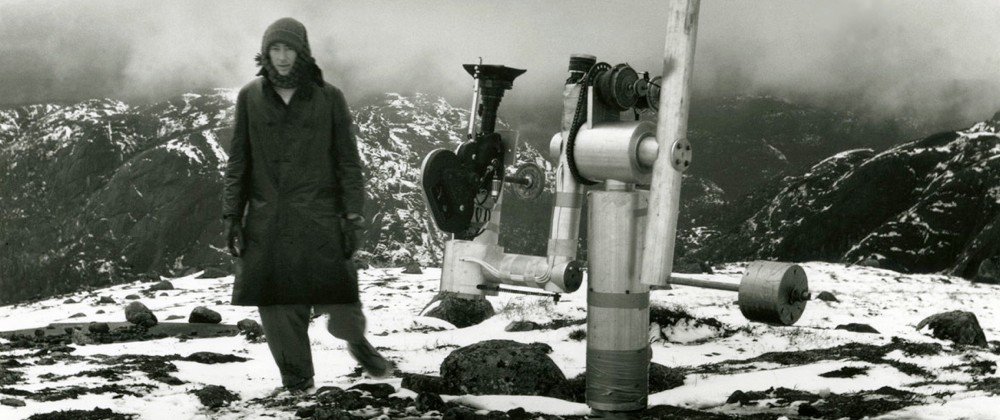
MICHAEL SNOW & HIS CAMERA MECHANISM USED IN "LA REGION CENTRALE"
These three films are considered his major works and the definative Structuralist films and Snow would periodically make other films while also spending time on his successful painting and sculptures as well as his Free Jazz ensemble. Among his more than two dozen films included many shorter Art films that were not necessarily Structuralist in form although I'm not quite sure what to call them.
"ONE SECOND IN MONTREAL" (1969);
This film simply takes a number of still photographs of Montreal and runs them as if in the type of slide show then used for tourist snapshots. Unlike the typical vacation shots however the pictures are drab black and white overcast winter scenes of anonymous back streets and snow draped parkettes. The streets are mostly deserted (eerily so) but occasional passersby can be seen but only from a distance and they are faceless and seemingly unaware of the camera. There is not a hint of any of Montreal's sights or famous nightlife which Snow as a Jazz musician would have been fully aware of. Montreal is actually also where the flashy Centennial Expo 67 was staged and where Snow's "Walking Woman" painting series was shown which may have been when he took these pictures. Indeed if he hadn't named it as such this could be any North American city in winter. The shots have no particular relationship to each other and are on the screen for longer than a second so the title's meaning if any is unclear. The candid camera gives the feeling of waiting for something to happen, possibly something bad and reminds me of the scene in Antonioni's "Blow Up" (1967) where David Hemmings photographer studies his series of photos (also black and white) on a wall searching for evidence of a murder. This film was originally silent but I added ambient sound which also reminded me of the "Blow Up" scene.
"COVER TO COVER" (1975);
Another, very brief experiment using photos this time using the flip-book method of early crude animators and still used in kids books today which makes it more kenetic and less comtemplative than than "One Second In Montreal" which by comparison looks like a series of Post Impressionist urban paintings of the Ashcan School. For this one I added a more involving electronic sound track.
"COVER TO COVER" (source flip-book);
Here is is the original flip-book from "Cover To Cover" showing how the process worked.
"SO IS THIS" (1982);
An even more simple concept is nothing more than a sequence of words, in white, projected on a black background. This sort of thing had been done by the Fluxus Film Collective in the sixties using random words and in short films of a few minutes but here the text tells a rambling but mostly coherent stream of consciousness explanation of itself along with wry asides and and a few digressions to mock the Ontario Film Censor Board and occasional tourettes-like cursing. And that's literally it. There are no other images or camera work. The words are only on screen for a second or two (some go by faster than others, notably the swearing) but are easy to read. Once again returning to a full length film it runs to forty eight minutes but unlike the feeling of having to endure his Structuralist works the film's breezy, conversationalist tone makes it easy to follow through to the end. This film was also silent but I added a soundtrack from John Cage's "Cartridge Music" as his spare but playful experimental methods seemed a good fit for this.
"TO LAVOISIER, WHO DIED IN THE REIGN OF TERROR" (1991);
This film was a collaboration with Carl Brown, a filmmaker and photographer who had been experimenting with a process of film developing and processing that flooded the film stock corroding it to create an effect that gave the illusion of being melted by flames. To add to the illusion sound effects of flames were added. The actual images were once again of people engaged in mundane tasks; swatting flies, playing cards, making dinner, eating dinner, operating a printing press, playing table tennis, playing piano. At the end an architect's model of a Greco-Roman type building is knocked down and consumed by fire. Visually the film stock effects are interesting enough but the film would have more effect if the images themselves were given some sort of context to the flames. The final shot of the architect's model burning up could invoke the destruction of Pompei and similar images of city streets or even better maybe some amateur super eight vacation films of regular families at leisure would have offered a more powerful metaphor of mass destruction in the nuclear age but Snow, while always suggesting that his films did have deep hidden meaning prefered to keep such hints as vague as possible. Note that the quality of this print, which is the one usually seen, is of very poor quality which is true of many Snow films and was partly by design. Snow allowed very few copies of his films to be made, forcing some of those DVD copies to be dubbed copies of other copies which have already been overplayed and are in poor condition and some are even taken from old VHS tapes as the case here. Whether this was to protect copyrights and keep control of distribution or by artistic design in the case of this film the degradation of the video quality may have been somewhat intentional or at least acceptable after the fact given the film's theme of destruction and he may not have minded and might have even found it amusing.
After this digression Snow's film work became more sporadic through the eighties and nineties with him making a short film only every few years but in the 2000's saw a renewed interest in his film work with the 2003 reworked version of "Wavelength". His final film was "Cityscape" (2019) which used a similar method from "La Region Centrale" this time shooting the Toronto skyline and was to be shown on a giant surrounding Imax screen for an even more physical experience. This time however he kept it short at only ten minutes presumably as the Imax people had little desire for another three hour opus.
Besides his actual work Snow would leave perhaps a more valuable legacy for all artists. In 1979 Snow created the famous large sculpture of Canada Geese in flight that hangs from the ceiling of the Eaton Centre, a giant shopping mall in Toronto. In 1981 the mall's management decided to decorate the geese for Christmas by tying red ribbons around their necks. When Snow complained he was brushed off by management saying they had paid for the work and could do with it as they pleased. So Snow sued and surprisingly won with a ruling that even though Snow had sold the work as an artist he had at least some right to protect the "Moral Integrity" of his work which was being publicly shown and the ribbons were ordered removed. Spare a thought here for the workmen who had to climb up several stories to tie ribbons around the necks of these giant fiberglass geese only to have to climb back up and remove them. At any rate this precedent has been used to protect other artists as a few years back an Alberta radio station announced they were going to edit songs down to three minutes or less by cutting out certain solos, intros or outros only to back down in the face of legal threats citing "Snow vs Eaton Centre" along with a torrent of online ridicule. A few years before that a Christian video store owner announced he was reediting movies to make them "Christian Family Friendly" by cutting out the sex and profanity (but not the violence because of course not) only to also have to back down when faced with legal action. Michael Snow no doubt enjoyed that. He died of pneumonia on January 5 aged 94.

SNOW'S EATON CENTRE CANADA GEESE
==================================================
David Rimmer (born 1942) was almost a generation younger than Snow but functionally came from the same artistic era as Snow, namely the Pop Art sixties of Warhol, Stan Brakhage, Maya Deren, and Fluxus. Unlike Snow who spent at least as much if not more time on art and music as on film Rimmer was focused on film from the start which he did from an earlier age. Based on the other side of Canada in Vancouver Rimmer was a university student who soon after graduating with a business degree decided he'd rather become a filmmaker and returned to university to take a filmmaking course, made friends with a professor who was also a CBC TV producer who provided encouragement him and some discarded CBC film stock with which he made his first student film.
"KNOW PLACE" (1967);
This is a documentary about an alternative arts school in Vancouver done in the fairly typical Cinema Verite style of the era which the National Filmboard Of Canada was particularly noted for at the time but it does include a few more artistic and Impressionistic shots of nature and closeups of artists and musicians working. The film may have been intended as a potential CBC or NFB project but it seems to have been left unfinished and footage has been lost. The music is from Folk Jazz guitarist Sandy Bull. After this artsy but fairly mainstream start Rimmer quickly adopted more abstract forms influenced by Brakhage as well as his own environmentalism to make a series of short films that focused on nature and it's interconnectedness and have an organic theme unlike Snow whose Structuralist films were focused on technique and mechanical equipment.
"MIGRATION" (1969);
Opening up with shots of a bird in flight but what at first seems like gentle turns dark as the frame freezes then melts with images of dead birds and a dead deer caught in an oil slick. Images of trees and clouds give way to manmade jungles of power lines. The images speed up and switch back and forth between regular and negative exposures with the atmosphere becoming foreboding before sequeing to more peaceful again as we return to more natural images and our high flying bird continues on its way. Rimmer said he wanted to show the interconnectedness of nature, a key component of the Green movement then in its infancy. This film along with two others; "Square Inch Field" (1968) and "Landscape" (1969) can be seen as Rimmer's Green Trilogy with "Migration" being the most unsettling. This film was originally silent so I added an appropriate electronic soundtrack.
"SURFACING ON THE THAMES" (1970);
Moving from nature to a more self consciously artistic theme this film is deceptively simple appearing to show a blurry image of an Impressionist painting of a couple of barges on the River Thames done in the style of JW Turner or Claude Monet, in fact one critic said that he at first assumed that it actually was a shot of a Turner painting until he began to notice that the barges were actually moving albeit however slowly. In fact Rimmer shot the footage and then systematically reshot the footage in a rear projection and slowed it down to the point where the two boats barely moved. He then also reshot the black and white footage on colour stock giving it a hazy orange glow. This film is as close to an Impressionist painting on film as we are likely to find. For this film I added some Brian Eno which seemed like the perfect Impressionist soundtrack.
"VARIATIONS ON A CELLOPHANE WRAPPER" (1970);
After the gentle Impressionism of "Surfacing On The Thames" this film experiments with jarring images that seem influenced by the cut and paste of the Dadas and 1920's German filmmaker Hans Richter with a short (only a few seconds) black and white shot of a woman unrolling a roll of cellophane shot from below and repeating it. That image (which was probably recycled from a black and white industrial film) is then manipulated by slowing it down, changing it to a photo-negative, washing out the colour and finally decomposing the image for for an effect that manages in six minutes to be more harsh and disorienting than Snow did in his forty minute two forty minute opus works. The imagery with its seizure inducing but oddly zen image manipulation taken from a factory setting anticipated the kind of videos made a few years later by the early Industrial bands and I had already earlier played around with this one adding a remix of an early Cabaret Voltaire (one of whose members also died last year) track as this reminded me like one of their early videos.
"SEASHORE" (1971);
For this film Rimmer didn't actually film any footage instead he took a brief fragment of film which appears to date back to the early film years of the 1890's featuring a group of mostly women wading in the surf. The image is repeated and manipulated by speeding up and slowing it down as well as reversing it, freezing it, flipping it upside down and turning into a photo negative to create a dreamlike effect which again suggests the impressionist painters but subverting it's restful atmosphere as the image gets manipulated as the film goes on for it's eleven minutes. Here Rimmer seems to be taking after the work of New York Avant Garde filmmaker Joseph Cornell who found footage and re-edited it in the 1940's.
"REAL ITALIAN PIZZA" (1971);
Shot over six months in New York this film uses a shot of the front of a Pizza Place shot from above showing various people walking by and sometimes walking in and out. Gradually traces of a narrative emerge; a panhandler accosts passersby, a group of cops escort some people out of the restaurant, firemen arrive and leave and winter comes and goes. Life goes on and that's about it. This film doesn't have the dream-like quality of the earlier films in favour of a more flat realist style as if we are watching events from the neighbourhood. I added an electronic soundtrack with some ambient sounds.
"WATCHING FOR THE QUEEN" (1973);
Like "Surfacing On The Thames" this film is a return to an almost still image but instead of that film's hazy Impressionism this one uses a Warhol influenced Pop Art single image. As the title says it's a black and white shot of a crowd waiting to catch a glimpse of the passing Queen. There is very little actual movement, so little in fact that while there are some slight facial fluctuations it's not until more than halfway through before we notice even a slight movement of any of the figures. Although nothing actually happens and the Queen never arrives unlike in many crowd scenes where people tend to look anonymous we notice that these people do have distinct faces and while they seem happy enough after a while they start to look vaguely menacing. Was this a comment on the fickleness of crowds and the nature of public adulation?
"CANADIAN PACIFIC PT.1" (1974);
"CANADIAN PACIFIC PT.2" (1975);
For these two films Rimmer returned to the realist method of "Real New York Pizza" by simply pointing a camera out the window of his studio apartment in Vancouver and filmed a stationary shot of some railyards with trains slowly running in and out with the Rocky Mountains in the background. Without the racketting noise of clattering trains, blowing horns and whistles and clanging bells and the smells of smoke and grease the trains become rather soothing, like watching tropical fish in an aquarium. The footage seems to have been shot at various times as the seasons appear to change throughout. At the end of the film we see a reflection of Rimmer's darkened studio as he putters about. There are two parts of the film and both are basically the same in look and length. The title "Canadian Pacific" could refer to both the Canadian Pacific Railways (AKA the CPR) one of Canada's national railways as well as the Pacific coast itself. Incidentally I actually grew up a half-dozen doors down from the train tracks and am quite familiar with the hypnotic quality of trains although I don't know that this required two parts. Unlike some of his earlier work there seems to be little subtext here other than treating a key element of the industrial age, locomotive power, as if it were a benign part of nature like lazily swimming fish or a flock of birds of his early films. For soundtracks I used two lazily train themed Jazz numbers from John Coltrane and Ray Brown.
"BRICOLAGE" (1984);
This was a return to the Dadaist cut-up and collage methods of Joseph Cornell as used in "Sea Shore" albeit with a denser assemblage of random images. The images are taken from a variety of found sources which seem to include some Silent Era footage, a scene from a fifties Juvenile Delinquent film (which is repeated several times), an industrial film and some more abstract footage similar to "Reflections On A Cellophane Wrapper". Unlike the dreamy "Sea Shore" the atmosphere is unsettling and nightmarish. Unlike his earlier films this one has a soundtrack which is also a collage of unsettling random sounds. I don't know if Rimmer was aware of the videos coming out of the early Industrial Music scene by groups like Cabaret Voltaire by this time as mentioned above but the feel is very similar.
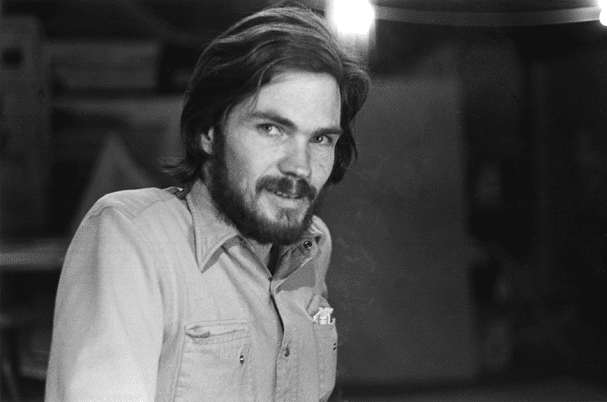
DAVID RIMMER
Unlike Snow who dabbled in different genres Rimmer was a working filmmaker and besides his various experimental films he also made fairly standard documentaries.
"SISYPHUS" (1983, fragment);
In 1983 Rimmer filmed one of two documentaries about the Karen Jammison Dance Troupe. These films are fairly straightforward but it does have shots of dancers in motion shot against a blank background that show an abstract artistic touch which is probably what attracted Rimmer to the project.
For his later period Rimmer returned to abstraction and experimented with the kind of Kinetic Animation Art pioneered by another 1920's German Dadaist filmmaker, Walter Ruttmann, crossed with the Abstract Expressionism of Jackson Pollack by painting directly onto the film for art shorts that are more playful than atmospheric or jarring. As Abstract Expressionism was associated with the Free Jazz scene for this I used some Free Jazz from 1980's Sheffield band Bass Tone Trap.
"EYE FOR AN EYE" (2003);
This one was more spacey and contemplative than "Gathering Storm" but done using the same method. As Abstract Expressionism was associated with the Free Jazz scene this I used some Free Jazz from 1980's Sheffield UK group Bass Tone Trap.
Rimmer died January 26, less than a month after Snow and a week after his own 81st birthday. Snow and Rimmer were considered Canada's two most important experimental filmmakers with Snow being the more famous (or infamous) and influential but while both were products of the same era and influences and their films had some similarities I find the best of Rimmer's work; specifically "Migration", "Surfacing On The Times", "Sea Shore", "Variations On A Cellophane Wrapper" and "Bricolage" to be more interesting, attractive, atmospheric, affecting and more human than Snow's Sturm Und Drang epics. As with the best of Dada, Pop Art, Op Art, Beat Poetry and for that matter Punk Rock and early Industrial music sometimes less is more.
On the other hand speaking of less is more here's one of Snow's last shorts;
"SOLAR BREATH" (Michael Snow, 2002);
